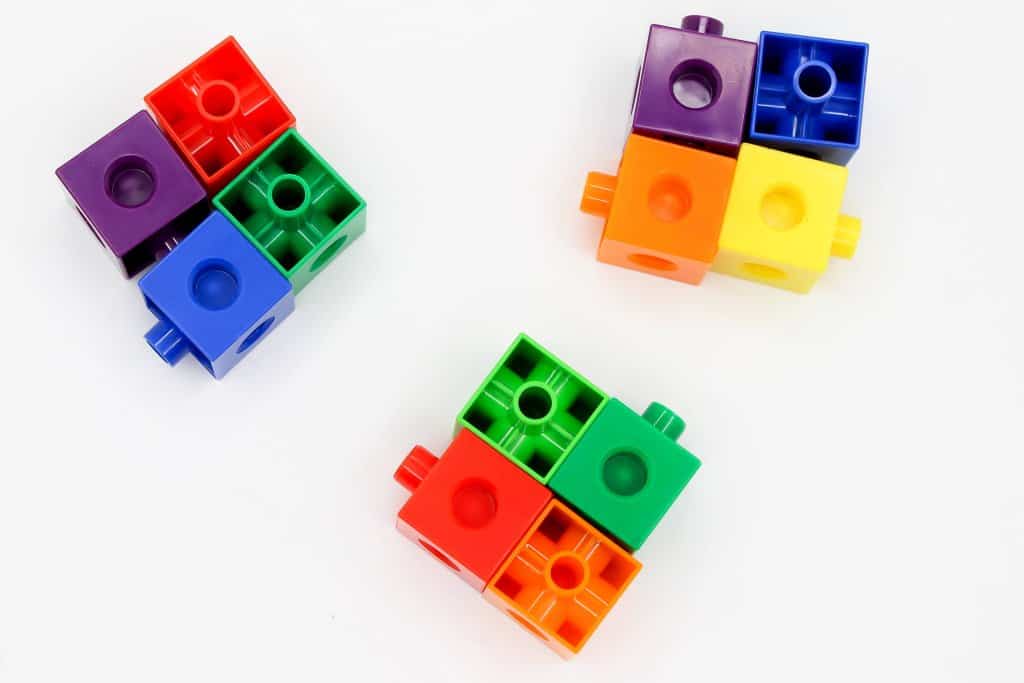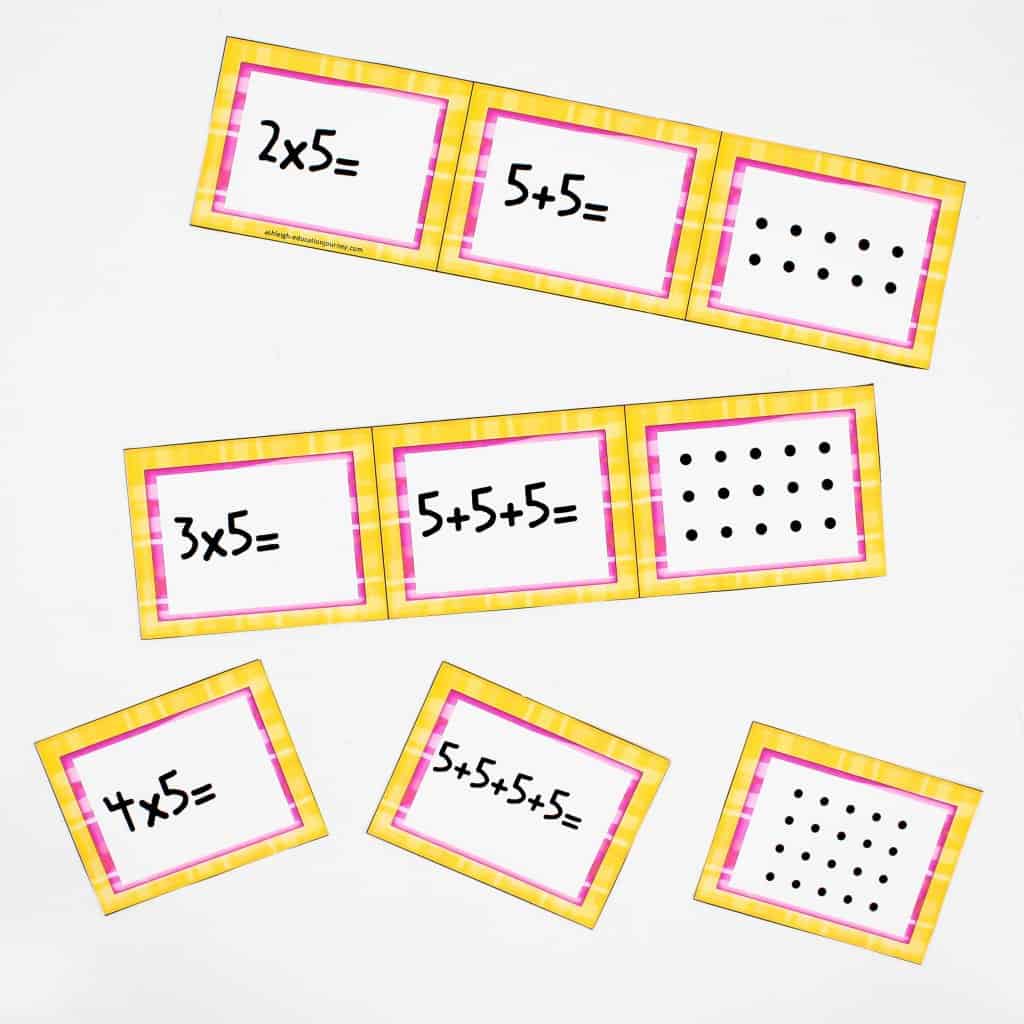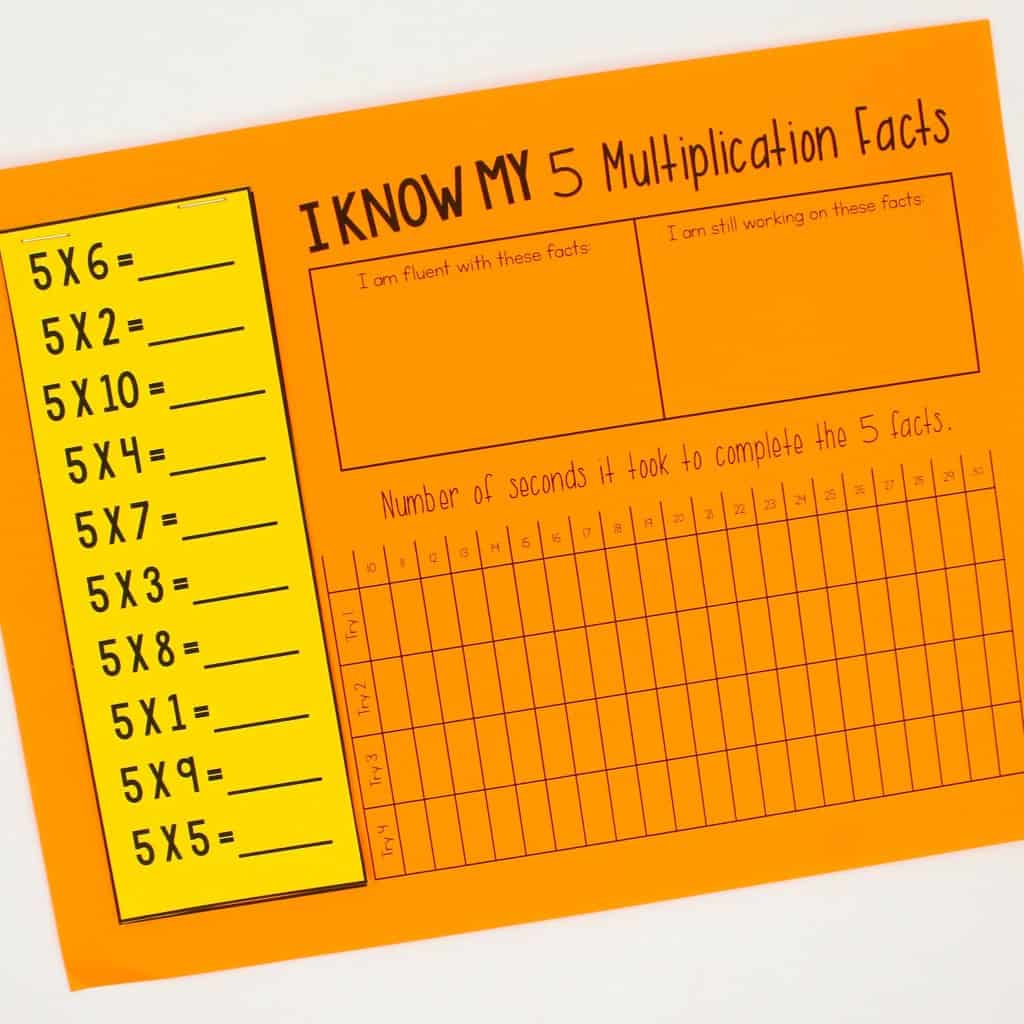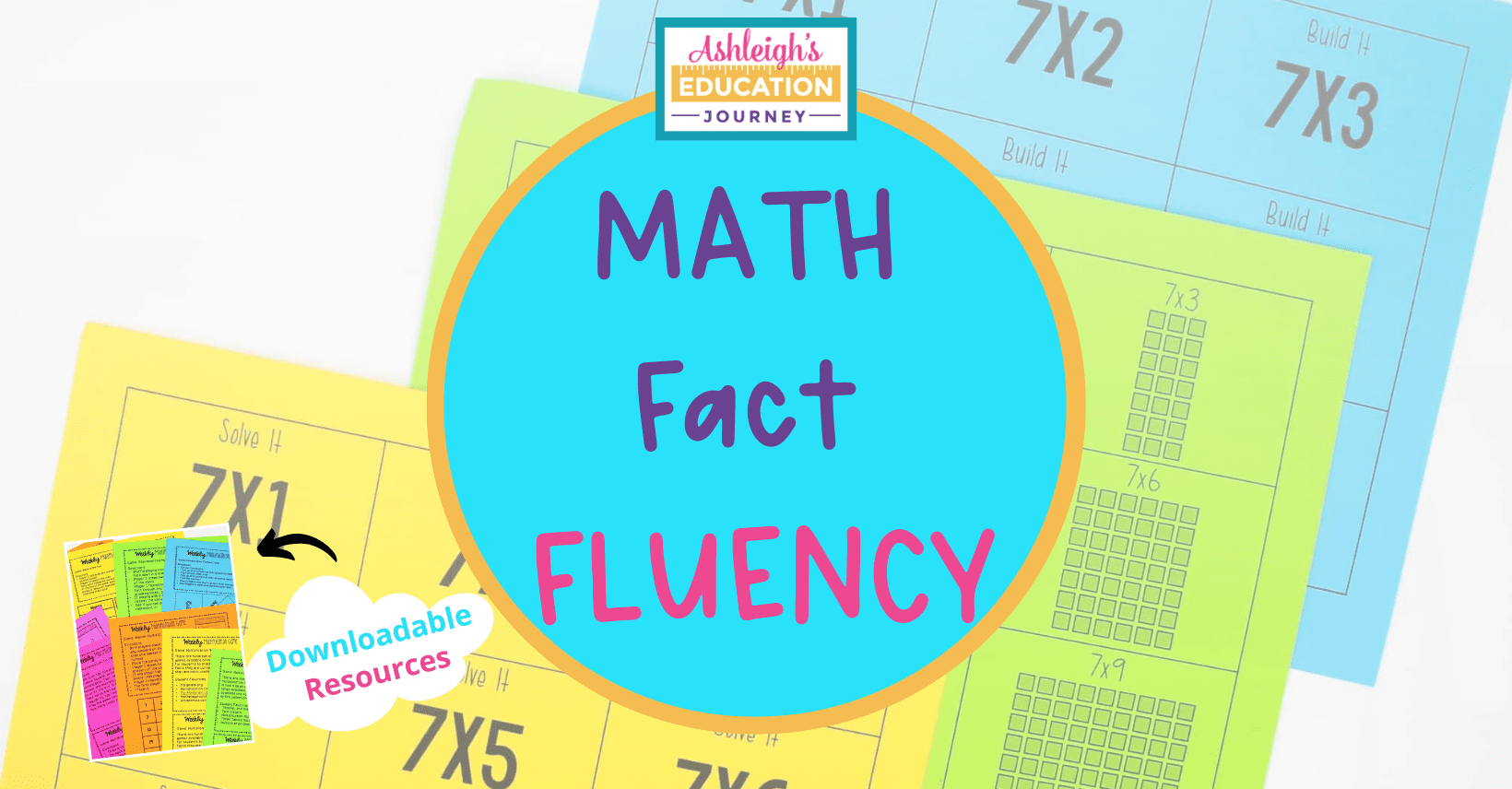
While all students benefit from math fact fluency, students who have difficulty in math may need more experiences and instruction to reach a solid level of fluency and automaticity. Those experiences may need to be more explicit and focused to support students. This post continues the blog series on how to support students who struggle in math by incorporating math fact fluency.
Building Fluency
Fluency with math facts supports students in becoming accurate, efficient, and flexible problem solvers. You can think of math fact fluency in three parts: accuracy, efficiency, and flexibility. This fluency is rarely developed in isolation. Instead, students need a solid foundation in number sense to develop their math fact fluency.
That’s one of the reasons that math fact practice should not the entire focus of an intervention or lesson. Instead, it is one component embedded within an intervention or lesson. You can read more about how to incorporate number sense activities into your math interventions or lessons here.
Quickly retrieving basic math facts is not easy for students who experience difficulties in mathematics. Without retrieval, students struggle to follow explanations and modeling of new mathematical ideas, concepts, and procedures. Automatic retrieval gives students more mental energy to understand complex mathematical tasks and solve multi- step problems.
Below are the steps I use to help build students’ mathematical fluency.
Step 1-Build It
The first step for students is to SEE math facts in action. For example when teaching multiplication facts, students create a grouping model for each set of facts (2×2, 2×3, 2×4, etc.).
If students complete this digitally, students drag the circle to indicate the number of groups and the squares to show the quantity in each group. It’s exciting when students realize they can simply add three more counters for each fact. Students think they found a way to beat the system and don’t realize they’re using the relationship between repeated addition and multiplication.
Step 2-Multiple Representations
The next step for students is to SEE different representations of the math facts. In this activity, students sort representations of multiplication equations. There are arrays, repeated addition, and number sentences. This allows students to develop an understanding of what multiplication means.
In the digital version students drag a written description, array, repeated addition problem, and a multiplication equation to a single row.
Step 3-Flashcards
Students begin with pictorial models of math facts as a flashcard. This pictorial model helps bridge concrete and abstract. As students become more automatic, they can move to abstract versions of the math fact. These are easily used in a small group setting.
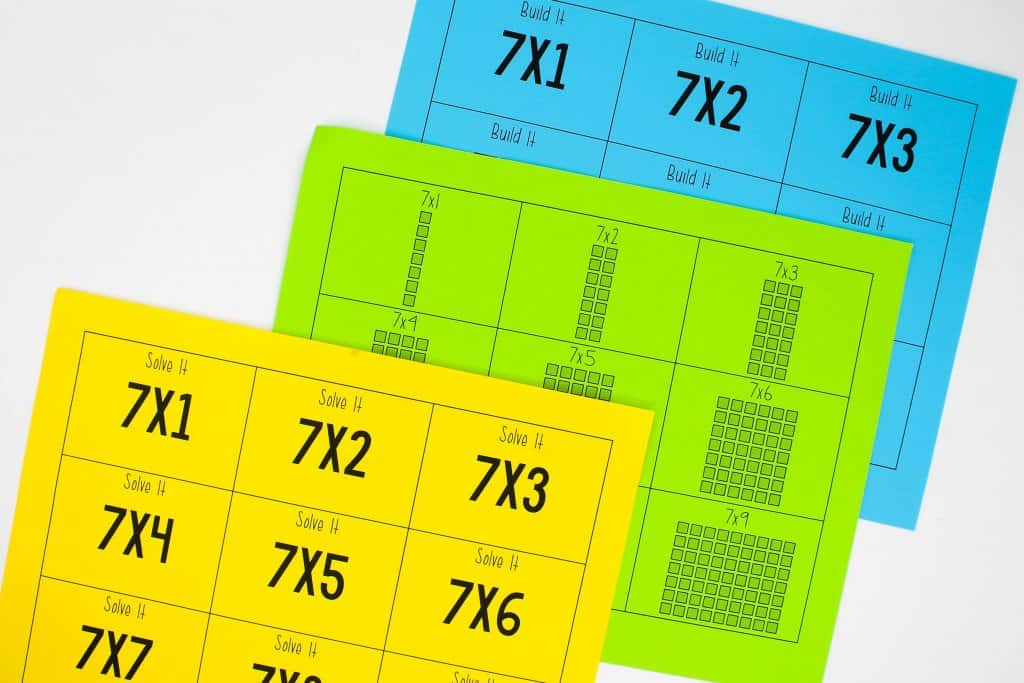 Step 4-Word Problems
Step 4-Word Problems
To provide context for math facts, students should solve AND write multiplication word problems. For example, if students are studying the four facts they solve two problems where four is a factor and write two problems where four is a factor. This gives students practice and prevents them from seeing math facts as an isolated skill.
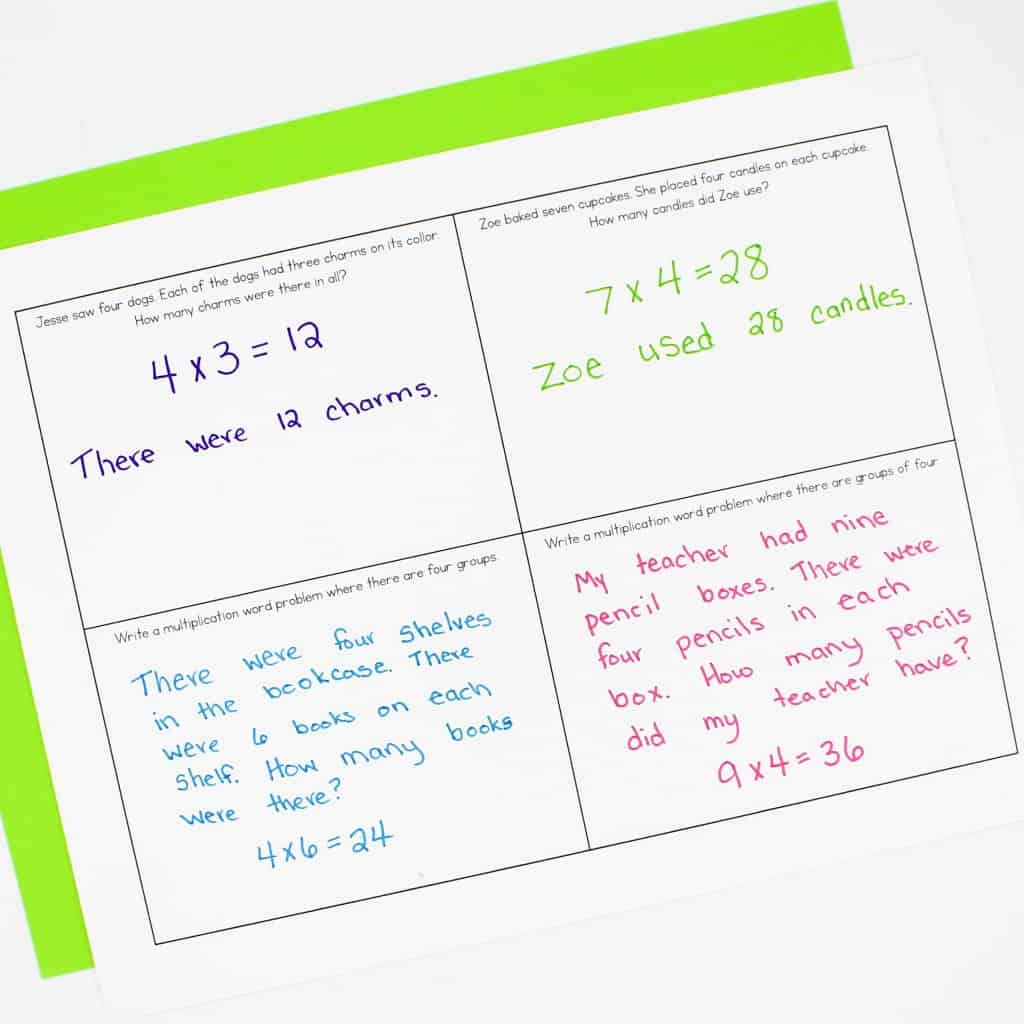 Step 5-Multiplication Games
Step 5-Multiplication Games
It’s important to include games in math fact practice. Games create a risk free environment that provides essential practice. When working with students who have difficulty in math, I closely monitor the game play to provide immediate feedback and guidance. My intervention units include math games as well as ms Weekly Multiplication Games. These games require dice or a set of playing cards, which are readily available.
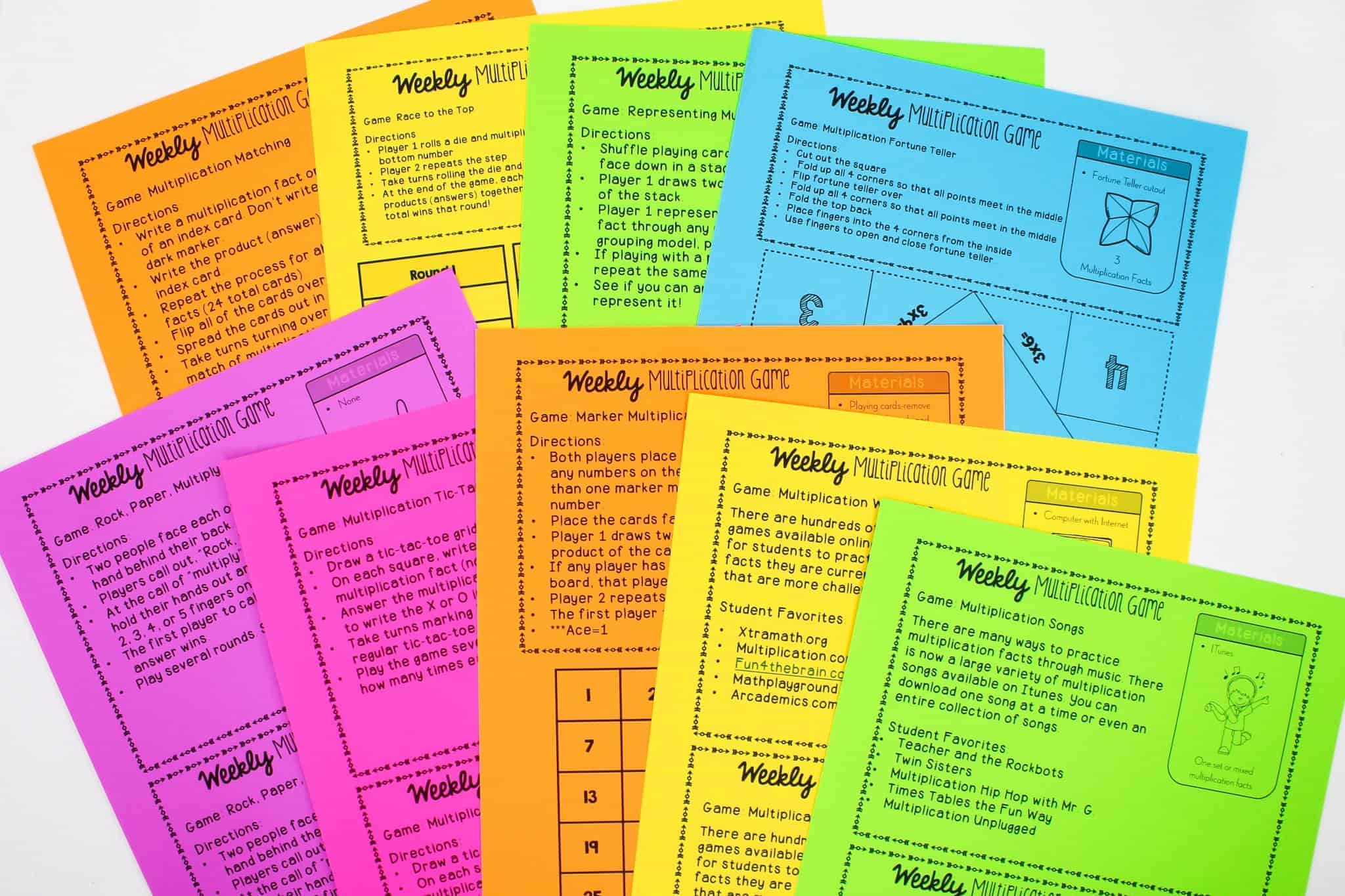
Timed Practice
Timed tests offer a good snapshot of how well students have memorized their facts, but are not a powerful teaching tool.
Rather than giving students a specific number of problems to solve in a set amount of time, I have students time how long it take to complete all problems correctly. This flip in timed tests alleviates unnecessary and unhealthy stress. Having that data lets students graph their progress. That progress encourages students to look at and celebrate their growth.
In the digital version, students click on a link to go to a Google Form where there is a short quiz. They must get each question correct before moving to the next question. Before beginning the quiz, students are prompted to start the included timer. Students are prompted to stop the time when they finish the quiz. Students graph how long it took them to complete the quiz.
You can see the multiplication activities mentioned in the blog post here!
Hopefully, you’ve found these strategies useful for all students. You can find more posts for supporting students with difficulty in math using the links below.

